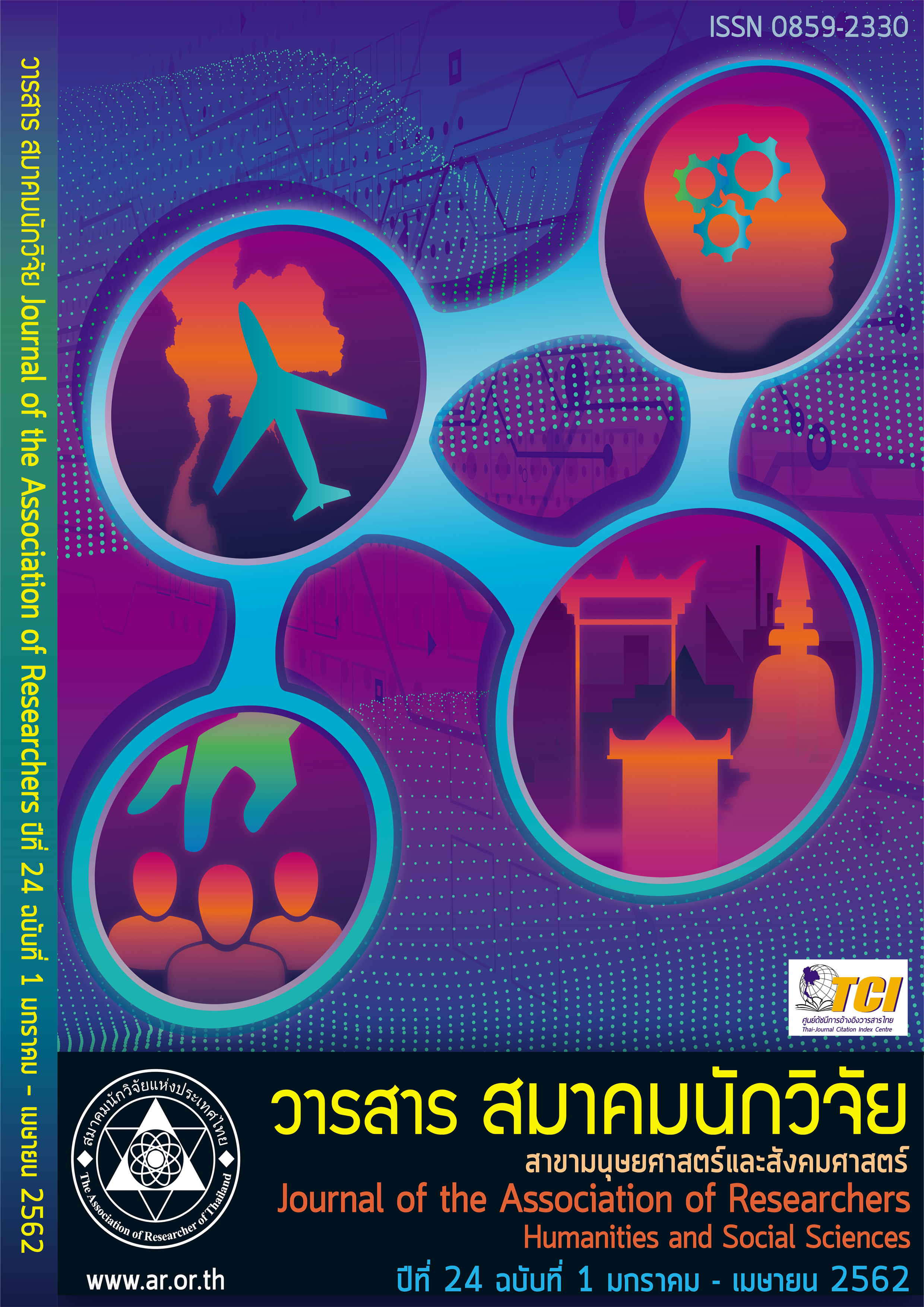Factors influencing the Use of Digital Technology by Secondhand and Bric-abrac Buyers in Bangkok and Surrounding Provinces.
Main Article Content
Abstract
In this day and age, people have become more dependent on the use of technology in everyday activities. Many studies have been conducted to investigate factors influencing the use of digital technology buying brand new products or services. However, there have not been many studies on factors influencing the use of digital technology for buying secondhand items. The purpose of this study is to investigate factors influencing the use of digital technology among secondhand and bric-a-brac buyers in Bangkok and surrounding provinces. Cochran (1977) sampling technique was utilized to calculate the sample size due to unknown population. Four hundred and twenty-five individuals were surveyed at six largest flea markets in Bangkok and surrounding provinces through convenience random sampling method. Moreover, twenty in-depth interviews were also conducted to capture additional information. A research model was developed based on Technology Acceptance Model (TAM) integrated with Perceived Risk concept. Proposed relationships between adoption of digital technology and fifteen independent variables were tested using Multiple Regression Analysis. The empirical evidence demonstrates that “Competitive Price” and “Ability to Search for Products Easily” were found to have significant positive relationship with adoption of digital technology while “Delivery Risk” and “Refund/Return Policy Risk” were found to have significant negative relationship. This research provides useful solution to an improvement of digital technology usage among secondhand and bric-a-brac buyers which compliments sustainable and economic development in Thailand.
Article Details
บทความที่ปรากฏในวารสารนี้ เป็นความรับผิดชอบของผู้เขียน ซึ่งสมาคมนักวิจัยไม่จำเป็นต้องเห็นด้วยเสมอไป การนำเสนอผลงานวิจัยและบทความในวารสารนี้ไปเผยแพร่สามารถกระทำได้ โดยระบุแหล่งอ้างอิงจาก "วารสารสมาคมนักวิจัย"
References
Cochran, W. G. (1977). Sampling techniques (3rd ed.). New York: John Wiley & Sons.
Cronbach, L. J. (1951). Coefficient alpha and the internal structure of tests. Psychometrika, 16(3)
Cunningham, M. S. (1967). The major dimensions of perceived risk. Risk taking and information handling in consumer behavior.
Davis, F. D. (1989). Perceived usefulness, perceived ease of use, and user acceptance of information technology. MIS quarterly, 319-340.
Davis F.D., Bagozzi R.P. & Warshaw P.R., (1989), “User Acceptance of Computer Technology: A Comparison of two Theoretical Models”, Management Science, 35(8): 982-1003
Fishbein, M., & Ajzen, I. (1975). Belief, Attitude, Intention, and Behavior: An Introduction to Theory and Research. Reading, MA: Addison-Wesley.
Gibbs, J. L., & Kraemer, K. L. (2004). A cross-country investigation of the determinants of scope of ecommerce use: an institutional approach. Electronic markets, 14(2), 124-137.
Greatorex, M., & Mitchell, V. W. (1994). Modelling consumer risk reduction preferences from perceived loss data. Journal of Economic Psychology, 15(4), 669-685.
Jacoby, J., & Kaplan, L. B. (1972). The components of perceived risk. ACR Special Volumes.
Kumar, U., & Rao, V. (2016). Exploratory Factor Analysis on Factors that influence the Shoppers Purchase Decision through E-Commerce. Qualitative and Quantitative Research Review, 1(2).
Li, Y. H., & Huang, J. W. (2009). Applying theory of perceived risk and technology acceptance model in the online shopping channel. World Academy of Science, Engineering and Technology, 53(1), 919-925
Marakarkandy, B., Yajnik, N., & Dasgupta, C. (2017). Enabling internet banking adoption: An empirical examination with an augmented technology acceptance model (TAM). Journal of Enterprise Information Management, 30(2), 263-294.
May So, W. C., Danny Wong, T. N., & Sculli, D. (2005). Factors affecting intentions to purchase via the internet. Industrial Management & Data Systems, 105(9), 1225-1244.
Moshrefjavadi, M. H., Dolatabadi, H. R., Nourbakhsh, M., Poursaeedi, A., & Asadollahi, A. (2012). An analysis of factors affecting on online shopping behavior of consumers. International Journal of Marketing Studies, 4(5), 81.
Park, C. H., & Kim, Y. G. (2003). Identifying key factors affecting consumer purchase behavior in an online shopping context. International journal of retail & distribution management, 31(1), 16-29.
Ramdansyah, A. D., & Taufik, H. E. R. (2017). Adoption Model of E-Commerce from SMEs Perspective in Developing Country Evidence–Case Study for Indonesia. European Research Studies, 20(4B), 227-243.
Thailand’s Small and Medium Enterprises Promotion Act. B.E.2543 (2000).
Value of e-commerce survey in Thailand 2014-2017. Electronic Transactions Development Agency (ETDA), Ministry of Digital Economy and Society of Thailand.
Van der Heijden, H., Verhagen, T., & Creemers, M. (2003). Understanding online purchase intentions: contributions from technology and trust perspectives. European journal of information systems, 12(1), 41-48.
Venkatesh, V., & Bala, H. (2008). Technology acceptance model 3 and a research agenda on interventions. Decision sciences, 39(2), 273-315.
Venkatesh, V., Morris, M. G., Davis, G. B., & Davis, F. D. (2003). User acceptance of information technology: Toward a unified view. MIS quarterly, 425-478.


